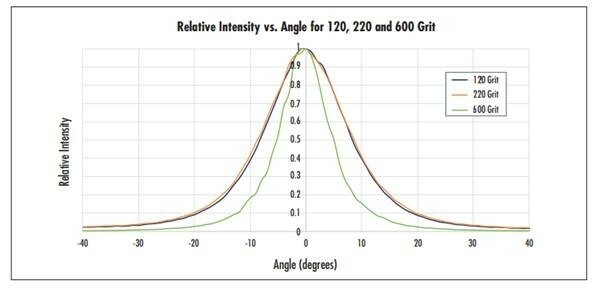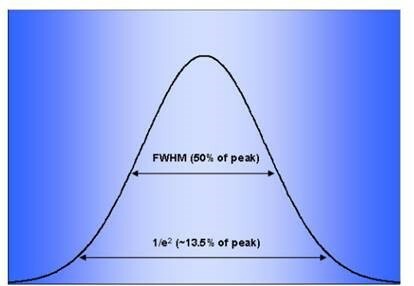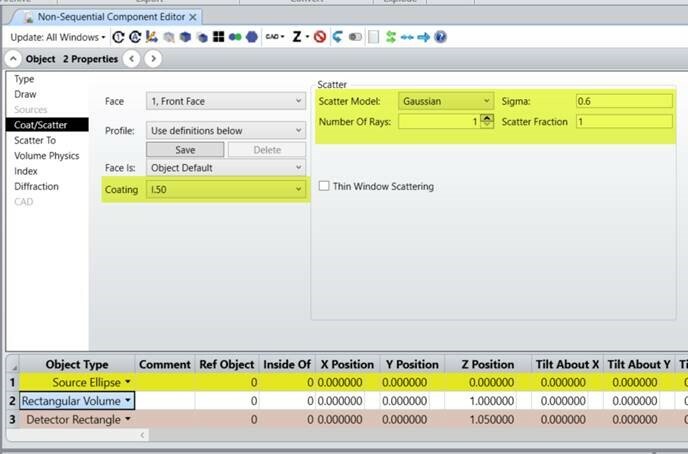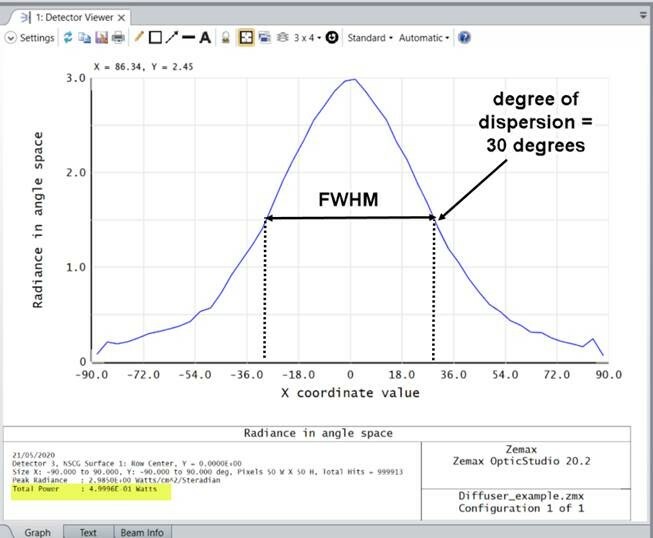Hi,
How can I simplify the scatter effect through a material using only the half power angle value?

Thanks
Hi,
How can I simplify the scatter effect through a material using only the half power angle value?

Thanks
Best answer by Ali H
Hi Luca
You can simulate a diffuser by using a Gaussian scattering profile. This is making an assumption the scattering is Gaussian as there is not much data supplied in the data sheet; however, we can use the degree of dispersion/half-power angle. For example, if we take a diffuser from Edmund Optics, they supply the relative intensity as a function of angle:

As an example, we can take one with a a degree of dispersion/half-power angle of 30 degrees this will give a FWHM of 60 degrees:

We may simulate this diffuser by using a Gaussian scatter model with a sigma of 0.6, and if our hypothetical diffuser has a transmission of 50%, we may simply add the I.50 coating to the Rectangular Volume:

So now have a diffuser with a with a FWHM of 60 degrees and a total transmittance of 50%:

For different degrees of dispersion, you will need to calculate the relevant sigma and you may have to create your own coating to create the total transmittance you need.
To add a coating, you can follow this Knowledgebase Article:
https://my.zemax.com/en-US/Knowledge-Base/kb-article/?ka=KA-01539
Also, you might want to look at the following article:
https://my.zemax.com/en-US/Knowledge-Base/kb-article/?ka=KA-01545
I have attached the file of the example diffuser that I made. Please let me know how you get on, and if you need anything clarifying or have any more questions, please ask.
Best,
Ali
Enter your E-mail address. We'll send you an e-mail with instructions to reset your password.